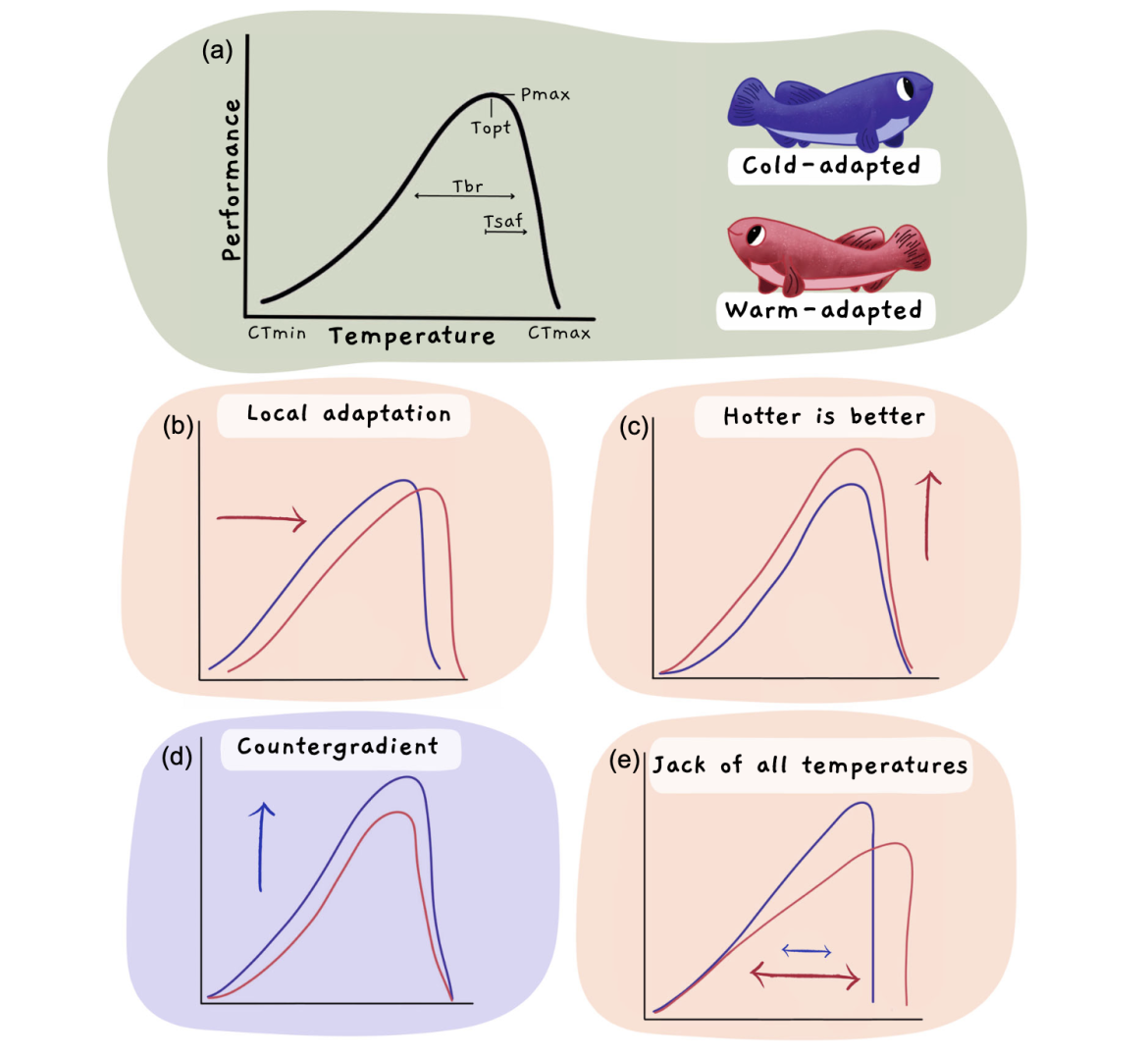
Figure 1. Shapes of thermal performance curves (TPC). (a) TPC parameters: CTmin and CTmax, the low and high temperatures where performance is equal to zero (note that this is not necessarily equivalent to CT min and CT max measured as loss of equilibrium. Thus, many authors prefer to refer to these points as the upper and lower Tcrit); Topt the optimal temperature where performance is maximized (Pmax); thermal breadth (Tbr ), the range where performance is greater than some specified percentage of Pmax; thermal safety margin (Tsaf), the temperature difference between Topt and CT max. The shape of the TPC between warm and cold acclimated populations may demonstrate (b) local adaptation, (c) “hotter is better” hypothesis, (d) countergradient variation, and (e) “jack‐of‐all trades but master of none” hypothesis.
Abstract
Thermal performance curves (TPCs) provide a framework for understanding the effects of temperature on ectotherm performance and fitness. TPCs are often used to test hypotheses regarding local adaptation to temperature or to develop predictions for how organisms will respond to climate warming. However, for aquatic organisms such as fishes, most TPCs have been estimated for adult life stages, and little is known about the shape of TPCs or the potential for thermal adaptation at sensitive embryonic life stages. To examine how latitudinal gradients shape TPCs at early life stages in fishes, we used two populations of Fundulus heteroclitus that have been shown to exhibit latitudinal variation along the thermal cline as adults. We exposed embryos from both northern and southern populations and their reciprocal crosses to eight different temperatures (15°C, 18°C, 21°C, 24°C, 27°C, 30°C, 33°C, and 36°C) until hatch and examined the effects of developmental temperature on embryonic and larval traits (shape of TPCs, heart rate, and body size). We found that the pure southern embryos had a right‐shifted TPC (higher thermal optimum (Topt ) for developmental rate, survival, and embryonic growth rate) whereas pure northern embryos had a vertically shifted TPC (higher maximum performance (Pmax) for developmental rate). Differences across larval traits and cross‐type were also found, such that northern crosses hatched faster and hatched at a smaller size compared to the pure southern population. Overall, these observed differences in embryonic and larval traits are consistent with patterns of both local adaptation and countergradient variation.